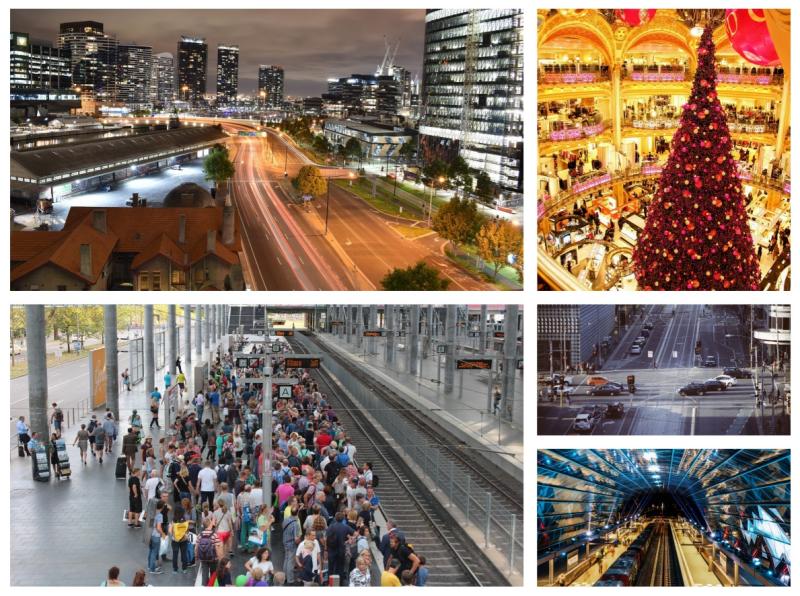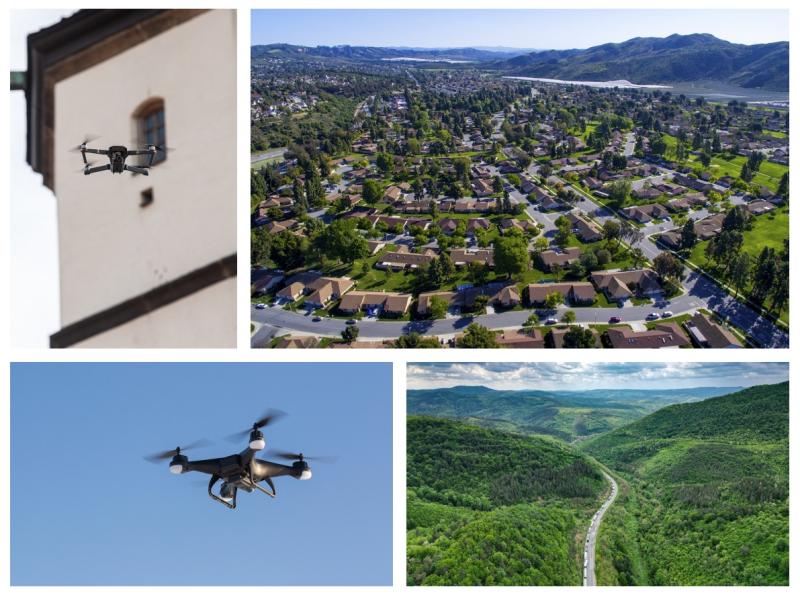Varifocal lenses, as the name suggests, feature flexible adjustment of focal length, enabling the use of different viewing angles and magnifications without changing lenses, meeting diverse shooting needs in diverse scenarios. Due to their flexibility and versatility, varifocal lenses are widely used in a variety of fields.
What are the common application scenarios of varifocal lenses?
Varifocal lenses achieve flexible switching of viewing angles by adjusting focal length and are widely used in scenarios that require dynamic adjustment of image composition or focal length. The following are common application scenarios:
1.Photography and videography
Varifocal lenses are widely used in photography and videography. For example, in portrait photography, varifocal lenses are ideal for dynamic scenes, such as weddings and event photography. Adjusting the focal length allows for background blur (large aperture, telephoto end) or full-body or half-body compositions (wide-angle end). In landscape photography, varifocal lenses can adapt to different shooting distances, reducing the need for lens changes. Wide-angle lenses can capture expansive scenes, while telephoto lenses can compress the sense of space, allowing for distant scenes like mountains and the moon.
In film and television shooting, varifocal lenses can be used to create different visual effects. For example, in live sports broadcasts, the telephoto end can be used to track the movements of athletes, such as soccer shots or track and field sprints, while the wide-angle end can create a panoramic atmosphere, allowing a single lens to meet multiple angles.
Varifocal lenses are commonly used in photography and videography
2.Security monitoring
Security monitoring is one of the important application directions of varifocal lenses. Varifocal lenses can monitor large areas while also focusing on specific details. For example, in public places like shopping malls, train stations, and airports, a varifocal lens mounted high above can monitor a large area at a wide angle, observing the flow of people and the overall scene. If an anomaly is detected, the varifocal lens can be quickly adjusted to a telephoto position to zoom in on a specific area or individual, obtaining more detailed information, such as facial features and behavioral movements, enabling timely action.
Varifocal lenses can also be used in road monitoring, such as at intersections and highways, to monitor traffic flow, vehicle conditions, and violations. Using the wide-angle lens allows for panoramic views of the entire intersection or road section, while the telephoto lens can capture details such as vehicle license plates and driver violations. This allows for multi-tasking monitoring with a single camera, providing robust evidence for traffic management.
Security monitoring is an important application of varifocal lenses
3.Scientific research and industry
In scientific research and industry, varifocal lenses are used in applications such as precision measurement, microscopy, and X-ray computed tomography. For example, in scientific experiments, varifocal lenses can record experimental phenomena at different scales and, when used in microscopes, can observe the details of tiny objects.
In industrial inspection, varifocal lenses can adapt to inspection objects of varying sizes, magnifying details through zoom, enabling high-precision dimensional measurement and defect detection. On automated production lines, varifocal lenses can adjust the focal length without changing lenses, adapting to the inspection needs of different workstations.
4.Drones and aerial photography
Varifocal lenses are also commonly used in drones and aerial photography, which can reduce the drone’s hovering adjustment time and adapt to dynamic flight needs. In drone inspections, varifocal lenses can be used for remote inspections of facilities like power lines and pipelines. Zooming allows for magnified observation of facility details and the identification of potential issues. In drone aerial photography, wide-angle lenses can capture large areas of terrain, while telephoto lenses can focus on ground details, such as architectural details or moving objects like vehicles and animals.
Varifocal lenses are also commonly used in drones and aerial photography
5.Education and training
In education, varifocal lenses can be used for online course recording, flexibly switching between the instructor, the blackboard, or the lab screen. Zooming allows for clear display of details, such as experimental procedures or document content.
In live remote training broadcasts or video conferencing, higher-magnification varifocal lenses can replace fixed-focus lenses, offering flexible adjustments and high-quality images to accommodate meetings or live broadcasts with varying audiences, enhancing the professionalism of the live broadcast or meeting.
6.Smart consumption
Varifocal lenses are also widely used in smart consumer products like action cameras. For example, mainstream mobile phones employ multi-camera + zoom algorithms, enabling seamless switching from ultra-wide-angle landscapes to telephoto portraits. When shooting video while walking, using the zoom function can reduce the need for physical movement and keep the footage stable.
Varifocal lenses are widely used in smart consumer products
7.Medical and defense military
In the medical field, varifocal lenses can be used in medical equipment such as endoscopes to provide clear internal images, providing important support for the smooth progress of surgery; in pathology testing, zoom can be used to observe the details of cells or tissues, assisting doctors in diagnosis.
In defense and military applications, varifocal lenses are often used for dynamic monitoring, tracking moving targets such as vehicles and ships, enabling detailed identification of target features. In military reconnaissance, varifocal lenses can capture information about distant targets, eliminating the need to approach closely to obtain clear images and reducing exposure risks.
In summary, varifocal lenses can meet the shooting and observation needs in different scenarios, provide high-quality images and videos, and improve work efficiency and user experience. They have been widely used in photography, videography, security monitoring, scientific research, industry, drones, education, medical care and other fields.
Final Thoughts:
By working with professionals at ChuangAn, both design and manufacturing are handled by highly skilled engineers. As part of the purchasing process, a company representative can explain in more detail specific information about the type of lens you wish to purchase. ChuangAn’s series of lens products are used in a wide range of applications, from surveillance, scanning, drones, cars to smart homes, etc. ChuangAn has various types of finished lenses, which can also be modified or customized according to your needs. Contact us as soon as possible.
Post time: Nov-21-2025







